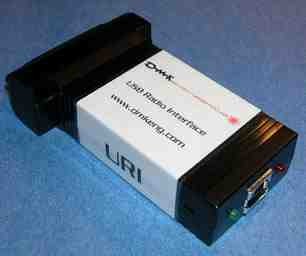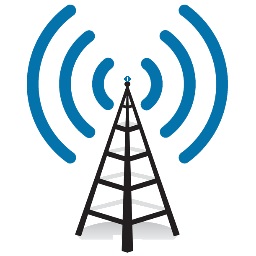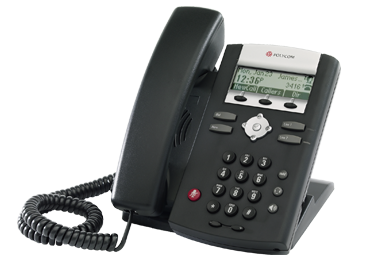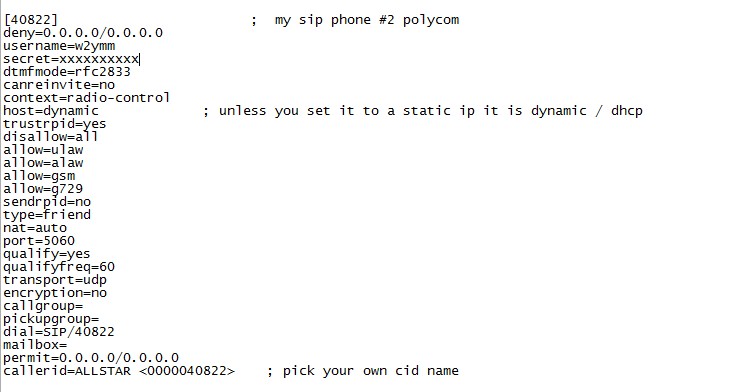COURTESY TONES FOR ALLSTAR
Tone Group
A tone group is a set of 4 comma separated integers formatted as follows:
(frequency1,frequency2,duration,amplitude)
frequency1 and frequency2 must be a number between 0 and 3000. These specify the tone frequency in Hz.
duration is the tone on time in Milliseconds. amplitude is the relative volume level of the tone or tones. This can be from 0 to 8192.
A tone group consisting of zeroes for amplitude and frequency will be sent as a silent period.
A single frequency tone can be sent by setting frequency2 to zero.
Note: There must be no spaces between the commas, numbers, or the parenthesis.
Change the X in ctX=|t to a Number to suit your needs
Example: Beep
Freq 880Hz Duration 100mSec
ct9=|t(1000,0,100,2048) ; BEEP
=========================================================================
HERE ARE SOME EXAMPLES I HAVE TRIED ON MY NODE
Bumble Bee † † This is the same as ACC default courtesy tone #1
Program a 640ms delay from squelch closure to 1st tone
Freq 330Hz Duration 100mSec
Freq 495Hz Duration 100mSec (one book had this at 500hz)
Freq 660Hz Duration 100mSec
ctX=|t(0,0,640,0)(330,0,100,2048)(495,0,100,2048)(660,0,100,2048) ; BUMBLE BEE
----------------------------------------------------------------------------------------------------------------
ACC default courtesy tone #2 is the same as above except the tone duration is 75ms
Piano Chord † † This is the same as ACC default courtesy tone #3
640ms delay from squelch closure to 1st tone
Freq 660Hz and 880 Duration 100mSec
ctX=|t(0,0,640,0)(660,880,100,2048) ; PIANO CHORD
----------------------------------------------------------------------------------------------------------------
ACC default courtesy tone #8
640ms delay from squelch closure to 1st tone
Freq 660Hz Duration 580mSec
ctX=|t(0,0,640,0)(660,0,580,2048) ; ACC8
------------------------------------------------------------------------------------------------------------------
ACC default courtesy tone #9
640ms delay from squelch closure to 1st tone
Freq 660Hz Duration 120mSec
ctX=|t(0,0,640,0)(660,0,580,2048) ; ACC9
-------------------------------------------------------------------------------------------------------------------
ACC default courtesy tone #10
640ms delay from squelch closure to 1st tone
Freq 660Hz and 250Hz Duration 100mSec
ctX=|t(0,0,640,0)(660,250,100,2048) ; ACC10
------------------------------------------------------------------------------------------------------------------------
Yellow Jacket (a half-as-long Bumble Bee)
Freq 330Hz Duration 50mSec
Freq 495Hz Duration 50mSec (one book had this at 500hz)
Freq 660Hz Duration 50mSec
ctX=|t(0,0,640,0)(330,0,50,2048)(495,0,50,2048)(660,0,50,2048) ; YELLOW JACKET
------------------------------------------------------------------------------------------------------------------------
Shooting Star
Freq 800Hz Duration 100mSec
Freq 800Hz Duration 100mSec
Freq 540Hz Duration 100mSec
ctX=|t(800,0,100,2048)(800,0,100,2048)(540,0,100,2048) ; SHOOTING STAR
----------------------------------------------------------------------------------------------------------------------
Comet
Freq 500Hz Duration 100mSec
Freq 500Hz Duration 100mSec
Freq 750Hz Duration 100mSec
ctX=|t(500,0,100,2048)(500,0,100,2048)(750,0,100,2048) ; COMET
------------------------------------------------------------------------------------------------------------------------
Stardust
Freq 750Hz Duration 125mSec
Freq 880Hz Duration 80mSec
880Hz and 1200Hz Duration 80mSec
ctX=|t(750,0,125,2048)(808,0,80,2048)(880,1200,80,2048) ; STARDUST
------------------------------------------------------------------------------------------------------------------------
Hornet † (just a Yellow Jacket with the tone sequence reversed)
Freq 660Hz Duration 50mSec
Freq 500Hz Duration 50mSec
Freq 385Hz Duration 50mSec
ctX=|t(0,0,640,0)(660,0,50,2048)(500,0,50,2048)(385,0,50,2048) ; HORNET
-------------------------------------------------------------------------------------------------------------------------
Wasp † (just a Bumble Bee with the tone sequence reversed)
Same as Hornet but double the duration of each tone
ctX=|t(0,0,640,0)(660,0,100,2048)(500,0,100,2048)(385,0,100,2048) ; WASP
-------------------------------------------------------------------------------------------------------------------------
Tumbleweed
Freq 1000Hz Duration 20mSec
Freq 800Hz Duration 20mSec
Freq 600Hz Duration 20mSec
ctX=|t(1000,0,20,2048)(800,0,20,2048)(600,0,20,2048) ; TUMBLE WEED
-------------------------------------------------------------------------------------------------------------------------
Fire Fly
Freq 1000Hz and 1200Hz 120mSec
Freq 1200Hz and 1400Hz 80 mSec
Freq 600Hz and 800Hz 100mSec
ctX=|t(1000,1200,120,2048)(1200,1400,80,2048)(600,800,100,2048) ; FIRE FLY
--------------------------------------------------------------------------------------------------------------------------
Chirp-Chomp
Freq 1500Hz 20mSec
Freq 1250Hz 20mSec
Freq 1000Hz 20mSec
Freq 750Hz 20mSec
Freq 500Hz 20mSec
Freq 2550Hz 20mSec
ctX=|t(1500,0,20,2048)(1250,0,20,2048)(1000,0,20,2048)(750,0,20,2048)(500,0,20,2048)(2550,0,20,2048); CHIRPCHOMP
----------------------------------------------------------------------------------------------------------------------------
Moonbounce
Freq 1000Hz and 800Hz 50mSec
Freq 800Hz 50mSec
Freq 600Hz 50mSec
Freq 1500Hz 50mSec
ctX=|t(1000,800,50,2048)(800,0,50,2048)(600,0,50,2048)(1500,0,50,2048) ; MOONBOUNCE
----------------------------------------------------------------------------------------
Dunce Cap
Freq 440Hz and 500Hz Duration 200mSec
Freq 440Hz and 350Hz Duration 200mSec
ctX=|t(440,500,200,2048)(440,350,200,2048) ; DUNCE CAP
----------------------------------------------------------------------------------------------------------
Uonk (pronounced like "honk" less the "h" sound)
Freq 500Hz and 700 Duration 100mSec
ctX=|t(500,700,100,2048) ; UONK
----------------------------------------------------------------------------------------------------------
Beep
Freq 880Hz Duration 100mSec
ctX=|t(1000,0,100,2048) ; BEEP
-----------------------------------------------------------------------------------------------------------
Boop
Freq 440Hz Duration 100mSec
ctX=|t(440,0,100,2048) ; BOOP
-------------------------------------------------------------------------------------------------------------
Bloop
Freq 840Hz and 500Hz Duration 100mSec
ctX=|t(840,500,100,2048) ; BLOOP
------------------------------------------------------------------------------------------------------------
Doorbell
Freq 800Hz Duration 75mSec
Freq 400Hz Duration 50mSec
ctX=|t(800,0,75,2048)(400,50,50,2048) ; DOORBELL
-------------------------------------------------------------------------------------------------------------
Descending
Freq 1000Hz 50mSec
Freq 750Hz 50mSec
Freq 500Hz 50mSec
ctX=|t(1000,0,50,2048)(750,0,50,2048)(500,0,50,2048) ; DESCENDING
-------------------------------------------------------------------------------------------------------------
Ascending
Freq 500Hz 50mSec
Freq 750Hz 50mSec
Freq 1000Hz 50mSec
ctX=|t(500,0,50,2048)(750,0,50,2048)(1000,0,50,2048) ; ASCENDING
-------------------------------------------------------------------------------------------------------------
Other Beeps:
Nextel beep
Freq 1760Hz Duration 30mSec
30ms gap
Freq 1760Hz Duration 30mSec
30ms gap
Freq 1760Hz Duration 30mSec
ctX=|t(1760,0,30,2048)(0,0,30,0)(1760,0,30,2048)(0,0,30,0)(1760,0,30,2048) ; NEXTEL
-------------------------------------------------------------------------------------------------------------
Function Complete
Freq 480 and 1200Hz for 40ms
40ms gap
Freq 480 and 1200Hz for 40ms
ctX=|t(480,1200,40,2048)(0,0,40,0)(480,1200,40,2048) ; FUNCTION COMPLETE 1
-------------------------------------------------------------------------------------------------------------
Another function complete
Freq 900 for 60ms
60ms gap
Freq 900 for 60ms
ctX=|t(900,0,60,2048)(0,0,60,0)(900,0,60,2048) ; FUNCTION COMPLETE 2
-------------------------------------------------------------------------------------------------------------
NASA "Over" beep
Freq 2450Hz for 200ms
Note that the beep used in the movie "Apollo 13" was 2500 Hz just to be different, and for 100ms just to speed the movie up.
ctX=|t(2450,0,200,2048) or ctX=|t(2500,0,100,2048) ; NASA OVER
Motorola tone remote
2,175 Hz and is 100-300 millisecond 2nd tone is 1,950 Hz.
ctX=|t(2175,0,200,2048)(1950,0,175,2048) ; TONE REMOTE 1
ct12=|t(2175,0,75,2048)(1950,0,50,2048);TONE REMOTE SHORT
---------------------------------------------------------------------
MORSE CODE
ctX=|ik ; Sends morse code K as Courtesy tone
___________________________________________
Tones in use on my node
[telemetry]
ct1=|t(350,0,100,2048)(500,0,100,2048)(660,0,100,2048)
ct2=|t(660,880,150,2048)
ct3=|t(440,0,150,4096)
ct4=|t(550,0,150,2048)
ct5=|t(660,0,150,2048)
ct6=|t(880,0,150,2048)
ct7=|t(660,440,150,2048)
ct8=|t(700,1100,150,2048)
ct12=|t(2175,0,75,2048)(1950,0,50,2048);TONE REMOTE SHORT
remotetx=|t(1633,0,50,3000)(0,0,80,0)(1209,0,50,3000)
remotemon=|t(1209,0,50,2048)
cmdmode=|t(900,903,200,2048)
functcomplete=|t(1000,0,100,2048)(0,0,100,0)(1000,0,100,2048)
patchup=rpt/callproceeding
patchdown=rpt/callterminated
unlinkedct=ct1 ; local off-link tone
remotect=ct3 ; remote base connected tone
linkunkeyct=ct8 ; remote on-link tone







